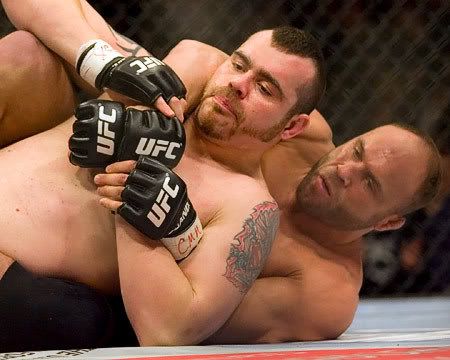The Great Debate - Boxing vs. Mixed Martial Arts

By Tom Donelson
The latest buzz going around the boxing world is the fear that mixed martial arts will replace boxing as the number-one combat sport in the world. Since the early 80’s when ESPN introduced kick boxing; there have been various styles of mixed martial arts on television and the sport has continued to evolve in various forms.
Watching the recent debut of Gary Shaw's EliteXC on the Showtime network, I can understand it's popularity and also see it's weakness.
The real strength in MMA is in it's promotion. The trademark cage gives the impression of two men going in, and only one man coming out (or two women in, one woman out.) One expects Mel Gibson and Tina Turner to show up in a scene from the hit movie Thunderdome. Lights blazing, screaming fans in full arenas, and an atmosphere that somewhat resembles professional wrestling, but at the same time produces a live event worth attending.
Unlike professional wrestling, the results are not predetermined and the moves are not choreographed.
Not only is MMA growing in popularity inside the ring, it is also blossoming on the outside as well.
There was a time when a person received boxing lessons in order to quire the skills of self-defense. Now, more and more people are enlisting in academies that specialize in mixed martial arts training.
I would wager that there are more people enlisted in academies who are training for black belts in various martial arts, than amateurs trying to become professional boxers.
The decline of amateur boxing has closed the doors of many gyms, leaving many young athletes without a nearby location to learn the sport. The predominance of schools teaching mixed martial arts in even the most rural communities gives many MMA events a solid base to draw fans in the most obscure areas.
Another factor helping mixed martial arts is boxing itself. Boxing has managed to throw away a lot of advantages through a variety of bad decisions inside and outside the ring. Only professional hockey has managed to crumble the image of its sport in a more destructive fashion than boxing.
As one long time boxing pundit observed, a live mixed martial arts audience will include a lot of young couples, something that used to be common, but now rarely seen at a live boxing event. MMA is beating boxing to the punch with respect to reaching the younger demographic.
The main weakness of mixed martial arts is actually what happens inside the ring. There were more punches thrown in a single round of the bout between Shane Mosley vs. Luis Collazo, than the entire evening of Showtime's mixed martial arts event.
In many cases, much of an MMA encounter takes place on the ground as the fighters work their skilled advantages through takedowns, grappling and submission maneuvers. Victory through submissions on the ground happens just as often as knockouts from strikes.
In the main event of EliteXC's debut show, fought between Renzo Gracie and Frank Shamrock, the weakness of MMA showed it's face. Gracie's advantage was sealed in his ability to get Shamrock on the ground. Becasue of that fact, most of the main event was fought on the ground and it left a burining question that remains in my head. How long will fans love a sport that is fought mostly on the ground?
Much of what happens on the ground in an MMA bout is not meaningless as the fighters are working to gain the upper hand. Throughout the bout, Shamrock found himself on the ground while trying to avoid the submission holds of his Brazilian opponent. Shamrock’s advantage in the fight was his striking ability but in many of these events, the ability to fight on the ground is just as important as the ability to fight in a standing position - and in many cases it's even more important.
In the end, Shamrock landed an illegal blow to Gracie’s head, which led to a disqualification. The ending was just as unsatisfying as any produced in an overhyped boxing fight.
What boxing has going for it is the ability to create a more action packed fight than most MMA encounters. There are no cages involved and all one has to do is count the number of punches thrown in an average boxing fight, and then compare that number to the amount being thrown in an average encounter between two MMA fighters.
A mixed martial arts instructor once told me that most street fights end up on the ground within the first 30 seconds, unless one individual quickly knocks the other out. The same thing happened in most of the MMA bouts that I observed.
After the initial attempts to land punches or kicks, many of the MMA athletes are then tempted to get their opponents on the ground.
The main business technique that boxing really lacks at the moment is the ability to properly promote the younger fighters in order to create new stars. The UFC, arguably the most popular MMA promotion in the world, has quickly risen in status through a near-perfect business model and their strong ability to create, and then properly promote new stars.
While boxing has the advantage of action in the ring, the sport's survival as the top combat sport in the world will depend on creating a new business model, and mimicking some of the techniques used by MMA organizations like the UFC in order to properly build and market new stars to their legion of fans.
(Source)






















No comments:
Post a Comment